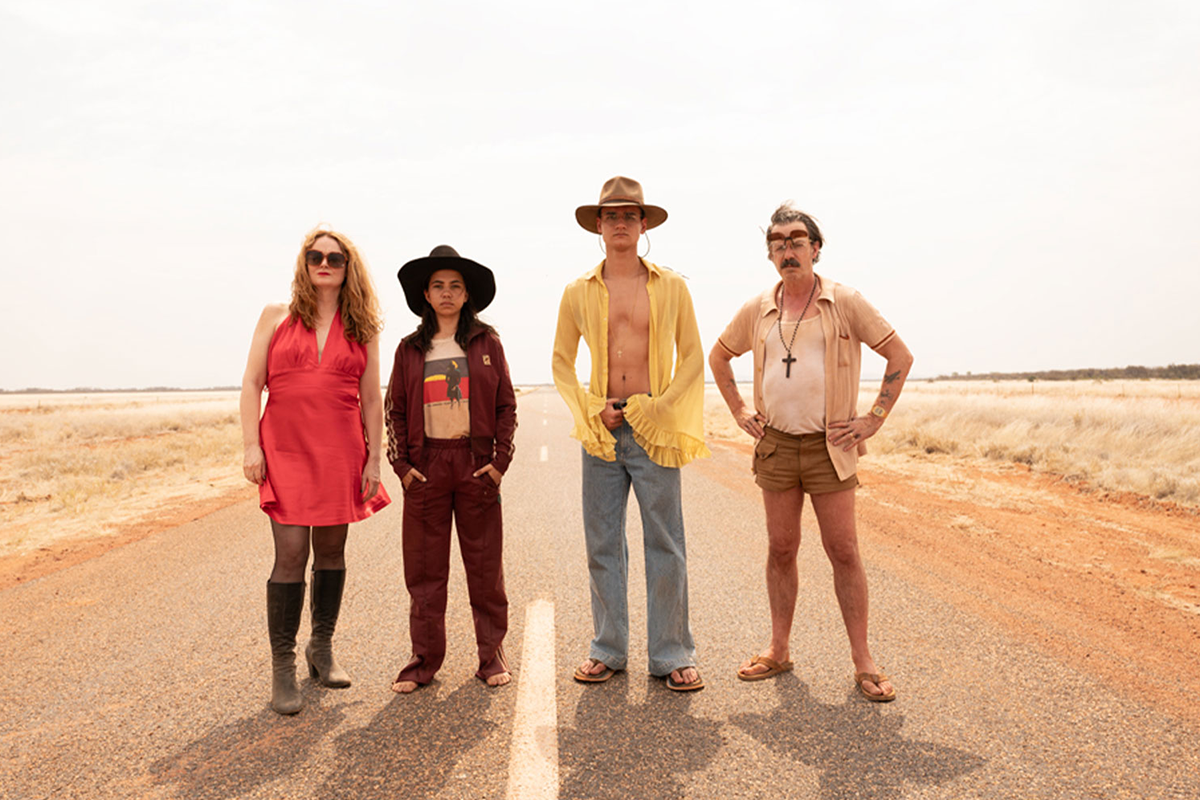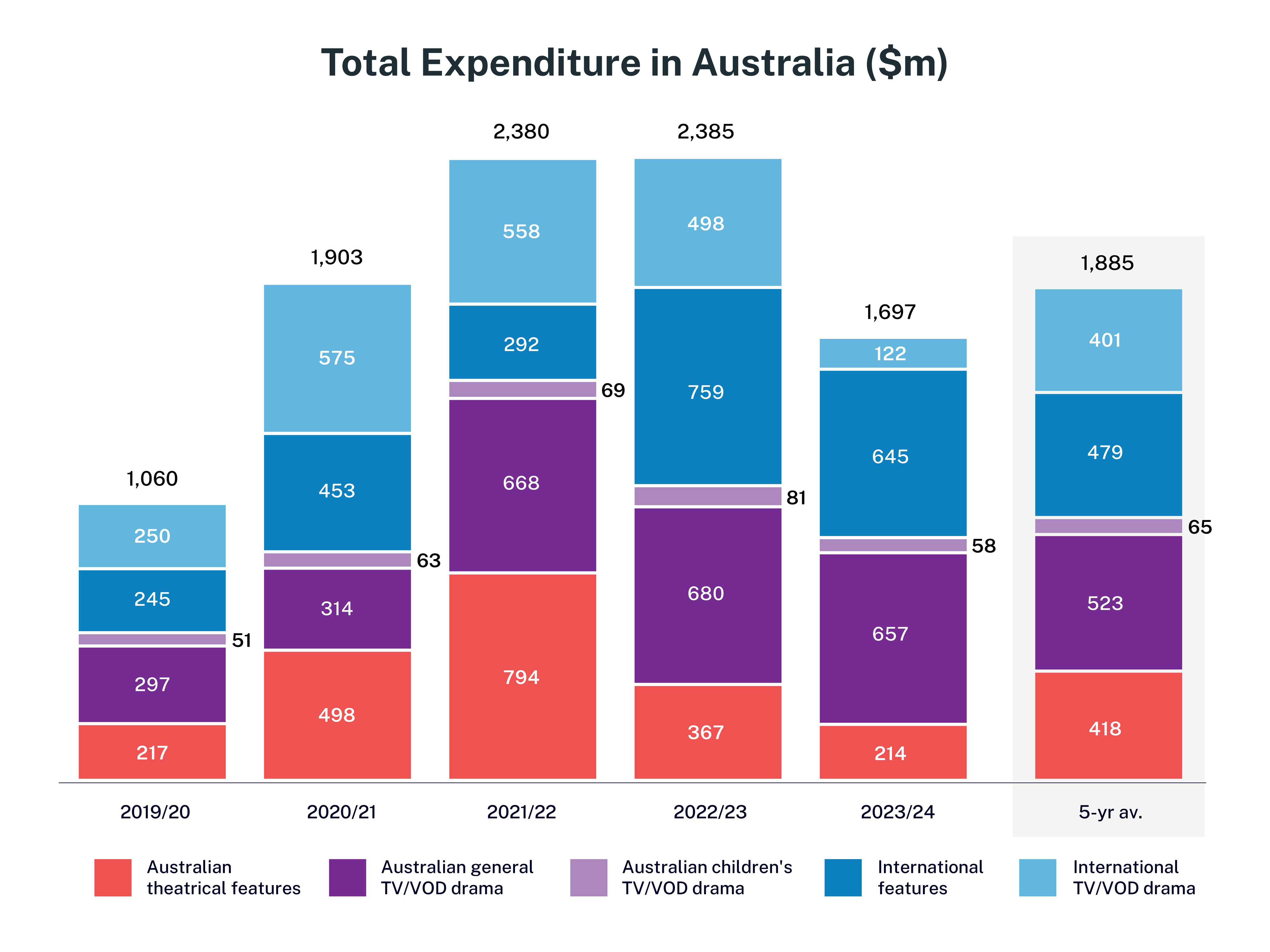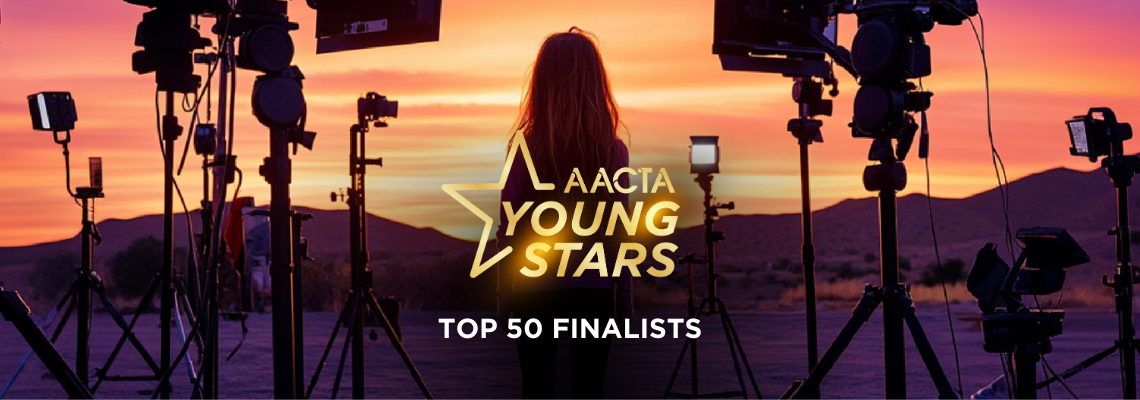THE Australian Academy of Cinema and Television Arts (AACTA) is calling ‘action’ for the debut AACTA Festival from February 8-11 across the Gold Coast.
The festival is a ‘blockbuster’ in its own right – four days of celebrating Australia’s vibrant screen industry that promises an immersive experience for all, from industry professionals to film enthusiasts, school-leavers, families, and aspiring creatives.
The AACTA Festival includes its paramount event, the AACTA Awards presented by Foxtel Group, being hosted at the Gold Coast’s Home of the Arts (HOTA) at Surfers Paradise.
With more than 70 events on the program, the AACTA Festival presents a dynamic array of panels, meet-and-greet, screenings and activities which are predominantly free to attend, according to AACTA CEO Damian Trewhella. 
The AACTA Festival is billed as an opportunity “to go behind the scenes of your favourite films, immerse yourself in the industry’s latest trends, meet your favourite stars, network with screen practitioners, and learn more about the exciting world of Australian film, TV, gaming, music and more”.
“AACTA Festival is a must-attend event for anyone who loves Australian film, television, music, gaming, art, and pop culture,” Mr Trewhella said. “We are excited to present more than 70 events over four days celebrating the excellence of our industry. From red carpet glamour to workshops and a special kids’ line-up, it’s an invitation for everyone to step into the magic of storytelling and creativity.”
The AACTA Industry Awards Ceremony will kick things off on Thursday, February 8, followed by a day of industry events, masterclasses, and creator discussions on Friday.
Saturday February 10 is the AACTA Awards Ceremony which will welcome all the stars on the red carpet. The festival concludes on Sunday February 11 with an array of screenings, live music, kids events, acting workshops, meet-and-greets, and more.
Sunday will also feature the Screen Careers Expo presented by Essential Screen Skills, running all day and offering pathways for anyone wanting to break into the industry. It promises to be a great day out for the entire family.
Cinematic highlights include a behind-the-scenes look at the making of The Matrix; an animation deconstruction of international blockbuster Spider-Man: Across the Spider-Verse, a deep dive into the stunt work from Mad Max: Fury Road and a showcase of the upcoming BINGE Original series High Country, with Leah Purcell.
Michael Gracey (The Greatest Showman), and producer Paul Currie will give audiences an exclusive look of their upcoming Australian film Better Man starring singer Robbie Williams.
Iconic Australian musician Russell Morris (The Real Thing) will take part in an exclusive in-conversation with composer David Hirschfelder, and audiences can hear from Mortal Kombat director Simon McQuoid on the progress of the film franchise currently being shot in Queensland.
Many of Queensland’s top writers will attend and be showcased throughout the festival, including Trent Dalton, author of Boy Swallows Universe, and Holly Ringland author of Lost Flowers of Alice Hart. In addition to this, audiences can hear from writers Nick Earls, Lystra Rose, Mathew Condon, Richard Jameson, Tristan Michael Savage, and Ben Hobson to name just a few.
The festival will also host a series of Meet the Creators events – panel discussions with internationally renowned talent including directors Danny and Michael Philippou (Talk to Me), Warwick Thornton (The New Boy), and the team behind the hit TV show The Newsreader.
AACTA’s Meet the Nominee panels offer a chance hear from some of Australia’s biggest stars, producers, and directors, nominated for a prestigious AACTA Award.
The festival also features a wide range of topical industry panels covering various aspects of the screen industry, from the future of AI and streaming to First Nations truth-telling and storytelling panels. Also included are a range of online gaming ‘Let’s Play’ events, and an immersive art experience led by acclaimed painter, actor, and musician Stan Yarramunua.
There will be fun for the whole family, with a series of kids events, including a Play School Live event, kid’s acting workshops, face painting, live music, and a very special appearance from Queensland’s beloved Bluey.
For those looking to join the industry, the AACTA Screen Careers Expo presented by Essential Screen Skills will be operating all-day on Sunday and provide a comprehensive and insightful immersion into the diverse facets of the screen industry.
Amanda Laing, Foxtel Group chief content and commercial officer, and Binge managing director said, “The AACTAs festival will provide more ways to showcase and celebrate the best of Australian storytelling and the incredible talent powering it. The Foxtel Group is proud to support this exciting new initiative.”
“The Gold Coast is one of the most prolific screen production centres in the Southern Hemisphere, with the screen sector contributing an estimated $590 million in direct and flow-on benefits for our city,” Gold Coast Mayor Tom Tate said.
The AACTA Festival program is designed to provide opportunities for seasoned industry professionals, budding creators and the community alike to explore Australia’s screen sector and celebrate the Gold Coast’s leading role in it.
Screen Queensland CEO Jacqui Feeney said, “The AACTA Festival will bring leading local and national screen practitioners together on the Gold Coast—a renowned production and screen talent hub, and the ideal home for this event. Screen Queensland is proud to support the inaugural AACTA Festival and welcome aspiring filmmakers and audiences alike to also connect, learn and revel in this celebration of screen culture.”
The latest AACTA Festival information and ticketing for events is available through the website, aactafestival.com .
AACTA Festival official hashtag: #AACTAFestival #AACTAs | Instagram: @aacta | YouTube: /AFIAACTA | Twitter: @aacta | Facebook: /AACTAAwards | Web: aacta.org | TikTok: //www.tiktok.com/@aacta">@aacta
AACTA Festival headline events
2024 AACTA Industry Awards presented by Foxtel Group and After Party Presented by Screen Queensland: Thursday, February 8.
2024 AACTA Awards Ceremony presented by Foxtel Group and Official After Party: Saturday, February 10.
AACTA Festival: Thursday, February 8-11.
About AACTA
The Australian Academy of Cinema and Television Arts (AACTA) is a not-for-profit organisation, aimed at promoting, encouraging, and celebrating screen excellence in Australia. The Australian Academy is Australia’s only independent, member-based, national screen organisation that represents all differing screen crafts, from directors to producers, actors, writers, musicians, and a vast number of members in below-the-line roles.
For over 60 years, the AACTA Awards (formerly the AFI Awards) have recognised and celebrated Australia’s highest achievements in film, television, documentary, short form, and digital content. The AACTA Awards are Australia’s most prestigious screen ceremony, embracing a diverse range of screen productions and recognising some of the biggest and brightest names in the industry.
The AACTA Awards are presented by Foxtel Group and supported by the Queensland Government, through Tourism and Events Queensland and Screen Queensland, and Experience Gold Coast. The event also features on the It’s Live! in Queensland events calendar.
ends
 Robbie Williams biopic, Better Man, picked up four AACTA Awards including Best Film and Best Direction in Film for Michael Gracey, bringing their total to nine AACTA Awards.
Robbie Williams biopic, Better Man, picked up four AACTA Awards including Best Film and Best Direction in Film for Michael Gracey, bringing their total to nine AACTA Awards.
 How to resolve AdBlock issue?
How to resolve AdBlock issue? 







